ZigBee-Powered Smart Lighting Solutions
投稿人:电子产品
2016-04-15
Smart lighting is making small but significant inroads into the consumer setting. Today’s products offer some key advantages; in addition to bringing the efficiency and longevity benefits of LEDs into the home, smart lighting’s wireless connectivity allows consumers to change the ambience in a room via the touchscreen on their smartphone or ensure the house is illuminated on arrival home by activating the system remotely.
However, this is only the beginning. Today, wireless connectivity brings benefits such as over-the-air feature upgrades for installed products and usage monitoring allowing homeowners to estimate a light’s remaining lifetime; tomorrow wireless connectivity will permit connection to the Internet of Things (IoT), enabling smart lights to, for example, alter their own energy consumption patterns to reduce power bills.
Several wireless technologies are targeting the smart lighting sector including Bluetooth® Smart (the low-energy form of Bluetooth technology), Wi-Fi®, and Z-Wave®. The market remains fragmented, but, arguably, ZigBee®’s penetration into the home automation sector and backing of lighting giants Philips and OSRAM has seen it take an early lead.
This article takes a look at the LED and ZigBee technologies underlying Philips recently introduced “Hue” smart bulb and explain how a designer could leverage such technologies to make their own lighting products smart. The article goes on to describe some of the ZigBee design resources and development tools from major manufacturers for smart lighting design and takes a glimpse at future development.
Making lighting smart
Home automation has been a dream for house builders since the routine electrification of dwellings in the 1920s and 30s, although practical implementations proved difficult due to rudimentary technology. However, since the 1980s, when the term “smart house” was first coined by the American Association of House Builders, the introduction of cheap and reliable electronics has accelerated the development of home automation technology.
Smart lighting is perhaps the poster child of the home automation sector. It’s based on a fusion of three relatively new electronic technologies: Solid State Lighting (SSL), wireless connectivity, and LED power supplies that can be connected directly from the mains supply. These technologies endow smart lighting with design and operational flexibility that was previously impractical with conventional lighting. Figure 1 shows how the technologies are combined in an ilumi Smartbulb, a smart light that uses Bluetooth Smart wireless connectivity from Nordic Semiconductor.
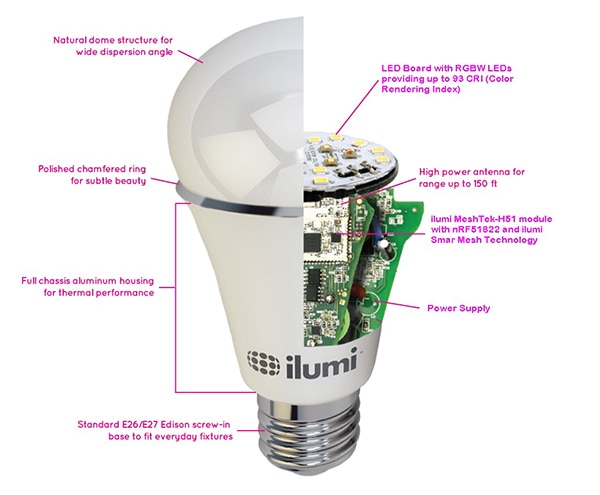
Figure 1: Smart bulbs, such as this Bluetooth Smart-powered example from ilumi, incorporate key technologies within standard lighting form factors.
LED-based SSL brings long life and high efficiency to smart lights and enables lighting engineers to come up with compact fixture designs and fine tune the color, temperature, and luminosity of their products to meet virtually every consumer’s taste.
A decade or so ago, wireless connectivity was first added to lights but was (somewhat unimaginatively) limited to reducing the wiring by replacing the physical connection between light switch and bulb with an electromagnetic one. However, rapidly improving RF technology, which has seen costs plummet while interference immunity improved, bandwidth increased, and power consumption decreased, now sees a robust bidirectional RF link enabling the light to send information about its status several times a second one way and receive instructions on how to operate the other. Today’s wireless connectivity is the “smart” in smart lighting because it links the light to powerful computing devices such as proprietary controllers, smartphones, tablets, and PCs. Wireless connectivity also allows connection to the Internet (via a gateway, bridge, or hub) enabling homeowners to operate domestic lighting remotely.
Philips Hue is a leading example of contemporary smart lighting (Figure 2). The bulb is an integrated unit (comprising power supply, light engine, optics, and wireless connectivity) in an A19 form factor with an E27 (Edison) screw connector. Hue is designed as a “drop-in” replacement for conventional lighting and can operate from 110/230 V and consumes 9 W at full power and 0.45 W on standby. Luminosity ranges from 360 to 600 lm and the Hue can reproduce Correlated Color Temperatures (CCT) from 2000 to 4000 K and offers a (claimed) lifetime of 15,000 hours. However, it’s not the specifications that make the Hue interesting, rather the technology that’s inside.
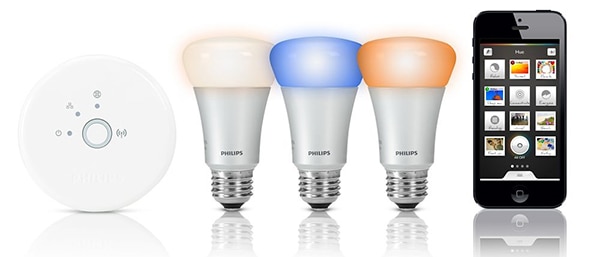
Figure 2: The Philips Hue is a 360 to 600 lumen smart bulb offering “millions” of colors.
The Hue is relatively unusual among SSL lighting in that it doesn’t use the most popular method of creating white light (combining a blue LED with an yttrium aluminum garnet (YAG) phosphor (see the TechZone article “Whiter, Brighter LEDs”). Rather, it mixes the light from red, green, and blue (RGB) chips (see the TechZone article “Creating White Light by Adding - Not Subtracting - Color”) to produce white light and a wide gamut of other colors.
Blue LEDs with YAG phosphor have been more popular because they exhibit much higher efficacy. The efficacy of conventional RGB LED light engines is compromised by the low efficacy of the green LED. However, Philips Lighting has addressed this issue by basing the green element of the Hue’s light engine on a lime-green LED from Lumileds’ Rebel ES family.
The lime-green device is not a pure-color LED, rather a combination of blue emitter and proprietary lime phosphor that overcome the efficiency problems of green devices. According to the Philips Lumileds’ datasheet, this blue LED/green phosphor combination is capable of an efficacy of up to 190 lm/W at a forward voltage of 2.75 V and forward current of 350 mA (see the TechZone article “Lime-Green LEDs Encourage Color Tunable-Lighting”).
Other manufacturers offer RGB LED light engines suitable for smart lighting applications. Key suppliers include LED Engin and Parallax.
The key advantage of the RGB LED light engine over the blue LED/YAG phosphor combination is that its color can be changed by altering the ratios of the RGB LEDs outputs. In contrast, once a blue LED/YAG phosphor device has left the factory, its color is fixed.
Consumers can change the color of the Hue using an app on an iOS or Android smartphone. Philips claims that “millions” of colors are possible and the app also allows for color profiles to be set up to suit different activities. For example, white, brighter light could be dialed up for reading, while a low level of light with a blue hue could suit watching a movie; or lights could be dimmed and made pinker towards the end of the day to prime people for sleep.
The underlying technology is based on every parameter in the Hue system being accessed by a unique URL from a central hub or bridge. The Hue’s wireless connectivity is provided by ZigBee (more detail shortly). ZigBee has many merits for smart lighting applications, but one drawback is lack of interoperability with smartphones (in contrast to competing technologies such as Bluetooth Smart and Wi-Fi). That means the app on the smartphone cannot control the smart light directly; rather the smartphone communicates with the bridge via Wi-Fi, and the bridge then translates the instruction into the ZigBee protocol so it can be transmitted to the lights.
Developers can use the Hue’s Application Programming Interface (API) to customize the lighting’s behavior. Simple instructions include setting the light to “ON” or “OFF” and changing brightness to one of 255 discrete levels. More complex instructions can be used to set the color. One method is to set the color based on the “xy” values within the CIE chromaticity diagram; a second method is to alter saturation and hue. The CCT of the light can also be altered independently of the color by adjusting the xy position of the light along the Planckian locus (see the TechZone article “How the CIE Color Space is Used to Design Better LEDs”). If the chosen color or CCT is outside the Hue’s gamut, it will illuminate with the closest possible color. Figure 3 shows the gamut of the various types of Hue bulb as triangles on the CIE color space.
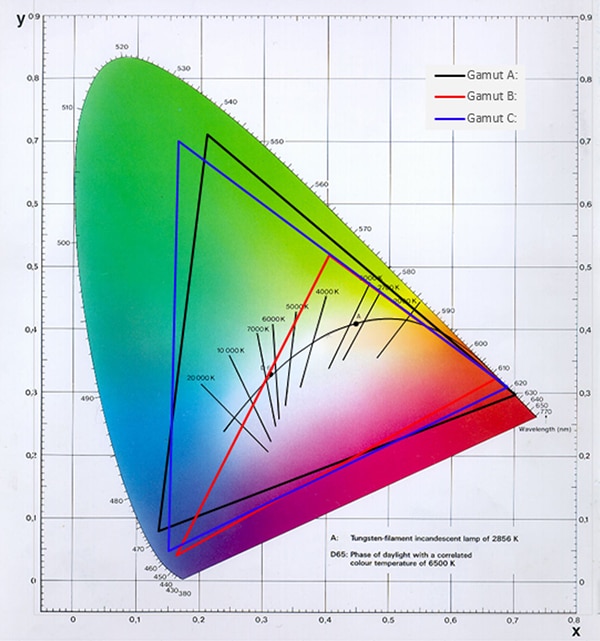
Figure 3: Philips Hue smart lights can reproduce any color within the triangles (depending on bulb model).
The choice of wireless technology is key to the success of a smart light project. Philips has chosen ZigBee, a low-power RF standard, which is perhaps not surprising as the company is a member of the ZigBee Alliance, the custodian of the ZigBee specification. OSRAM’s LIGHTIFY™ smart bulb also supports the standard.
According to the alliance, ZigBee enjoys significant market share in home automation applications. It is an open standard with a physical layer (PHY) and media access control (MAC) adhering to the IEEE802.15.4 specification (designed for low-data-rate wireless personal area networks). While IEEE802.15.4 is also the foundation for other low-power wireless technologies (for example, Thread and WirelessHART), the upper layers of the ZigBee standard are unique to that technology.
ZigBee operates in the 2.4 GHz license-free Industrial, Scientific, and Medical (ISM) part of the radio spectrum (915 and 868 MHz versions are also available) with 16 channels and spread-spectrum coding to ensure immunity to interference with other radios operating in the congested 2.4 GHz band. The raw, over-the-air data rate is 250 kbit/s per channel although actual data throughput will be less than the maximum specified bit rate due to the packet overhead and processing delays. Indoor range is up to 20 m.
ZigBee’s focus on home automation has resulted in a dedicated standard or “profile” for lighting applications. Known as ZigBee Light Link (ZLL), version 1.0 of the standard has been ratified and version 1.1 is in development. ZLL has been developed in cooperation with major lighting manufacturers. The alliance claims that ZLL not only describes an application messaging protocol for lighting control, but also includes a mechanism that makes “out-of-the-box” commissioning as easy as pushing a button. A key principle of the ZLL profile is that operation of the system is intuitive and no more complex than a traditional wired lighting system. The ZLL profile retains characteristics common to all ZigBee profiles, including the IEEE802.15.4 secure mesh networking — a key requirement for lighting applications which could number tens or even hundreds of bulbs working in harmony.
For example, the Hue uses ZigBee’s mesh technology to ensure all the lights in a group act as signal repeaters such that the whole group acts as a single entity even if, for instance, the user’s smartphone is out of range of some of them.
Developers can use ZLL products to implement different color settings, dimming levels and brightness, as well as custom settings such as “movie” or “sleep.” ZLL’s flexibility is based on the ZigBee cluster library concept, which provides a suite of application-level, over-the-air messaging protocols. ZLL extends the clusters that are most appropriate to smart lighting and uses these to define a range of standard devices on which designers can base commercial solutions.
As an open standard, ZigBee ensures interoperability between certified products. Such interoperability — and a multivendor supply chain –– enables lighting designers to specify ZigBee silicon safe in the knowledge that they can change suppliers for later products and still be in with a good chance that newer devices will communicate with legacy lights.
According to the ZigBee Alliance, one extra benefit of using the ZigBee standard is that ZLL devices are also interoperable on the network level with devices based on other application profiles, such as Home Automation (HA). It’s claimed that this allows end users to integrate non-lighting devices as part of a wider smart home network.[1]
Easing wireless development
RF engineering has a reputation for being a tricky business, especially for non-experts in the discipline such as lighting developers. However, while still not trivial, the RF silicon suppliers provide tools and reference designs that make adding wireless connectivity to a product much easier.
Silicon Labs, for example, supplies a development kit designated EM35X-DEV for its EM357 ZigBee System-on-Chip (SoC). The EM357 is promoted by the company as a good solution for smart lighting applications (Figure 4). The EM357 features a 32-bit ARM® Cortex® -M3 processor, an IEEE802.15.4 radio, 128 or 192 kB Flash, 12 kB RAM, and AES128 encryption. The radio has a 103 dB link budget and low-power operation of 26 mA when receiving (RX) 31 mA when transmitting (TX).
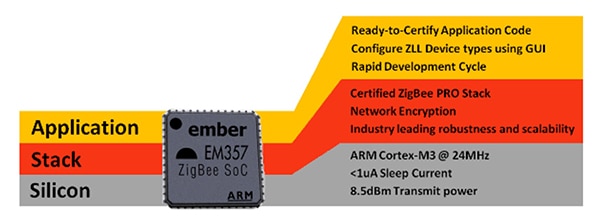
Figure 4: Silicon Labs’ EM357 ZigBee SoC is a good choice for smart-lighting applications.
The development kit includes three EM35x radio control modules plus a pack of six other modules, data emulation interface cables, an 8-port switch with four POE ports, and InSight Desktop Software. The kit also includes a 30-day trial license for IAR Embedded Workbench for ARM to ease application code development on the embedded processor.
Atmel also supplies a ZLL development kit designated ATSAMR21ZLL-EK for the SAM R21 ARM-based wireless microcontroller. The chip is based on a 32-bit ARM Cortex-M0+ processor and an integrated IEEE802.15.4 radio. The SAM R21 devices are available in 32- and 48-pin packages with up to 256 kB Flash and 32 kB of SRAM. The radio has up to 103 dB link budget, and in addition to the standard ZigBee raw-data rate of 250 kbit/s, can support data rates of 500 kbit/s and 1 and 2 Mbit/s.
The development kit supports on-board embedded debugger, antenna diversity, RGB LED, OLED display, joystick, user LEDs, user switches, Atmel Xplained Pro extension header, external USB, and UART interfaces.
Texas Instruments (TI) also supplies a ZLL compliant ZigBee SoC, the CC2531. The chip features an 8051 microcontroller, IEEE802.15.4 radio, 128 or 256 kB Flash, 8 kB RAM, and AES128 encryption. The radio features low-power operation of 24 mA when receiving (RX) 29 mA when transmitting (TX). A reference design for a color LED lamp, “CC2531 Zlight2 Reference Design,” using OSRAM OSLON® SSL LEDs is available on TI’s website[2] (Figure 5).
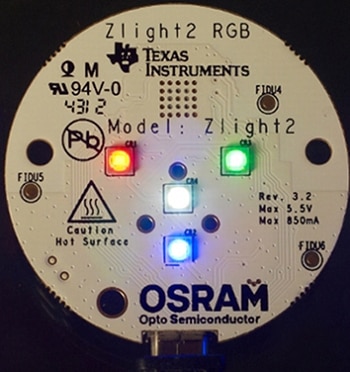
Figure 5: TI offers a reference design for RGB LED powered lights.
Driving smart lights
Most existing LED lighting is designed with an external AC-to-DC converter to step down the mains voltage to the low levels of DC voltage demanded by the LEDs. However, contemporary smart-light solutions are designed to screw straight into the socket vacated by a conventional light and hence require an integrated power supply (or LED driver). This is a challenge because such supplies are relatively complex (driving three LEDs for every white LED in a conventional product); yet have to fit into a tight space in close proximity to very hot LEDs.
There are a number of commercial chips upon which the developer can base a smart-light LED driver from companies such as NXP, ON Semiconductor, and TI. For more information, please refer to the DigiKey article library which contains resources to guide the designer in the right direction for specifying a suitable driver for an integrated smart light.
Today’s smart lights are impressive products but only begin to scratch the surface of what’s possible. Much of their operation still relies on human intervention. Tomorrow will see wirelessly connected lights communicating directly with the Internet––through technologies such as an IPv6 layer in the RF protocol stack––and taking their proper place in the burgeoning IoT.
By communication directly with the Cloud, lights could come on before the sky darkens due to a storm, regulate their usage to take advantage of variable tariffs from energy providers, or even order their own replacement when they sense degradation in performance. The future for smart lights is very bright.
For more information about the parts discussed in this article, use the links provided to access product information pages on the DigiKey website.
References:
- "Enabling Simple, Interoperable Wireless Lighting Control," Silicon Labs.
- TI CC2531 Zlight2 Reference Design
免责声明:各个作者和/或论坛参与者在本网站发表的观点、看法和意见不代表 DigiKey 的观点、看法和意见,也不代表 DigiKey 官方政策。









